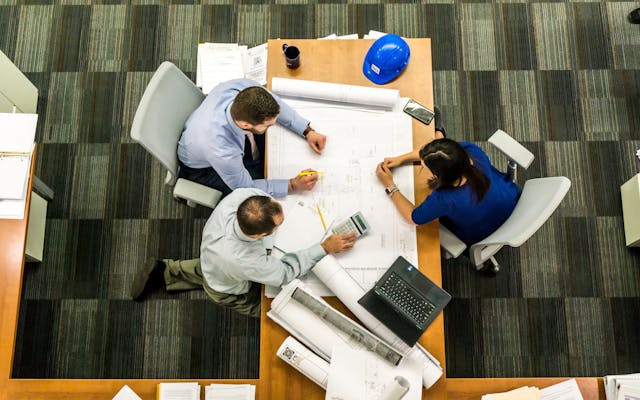- Sustainable building practices and energy-efficient designs are necessary for responsible homeownership.
- Potential pitfalls in home building include underestimating the budget, overlooking good design, ignoring future needs, and choosing the wrong materials or builders.
- Avoiding these pitfalls requires awareness and proactive steps.
- The process of building a custom home should be approached with patience, research, and involvement to create a unique and personal sanctuary.
The prospect of building your custom home is an exhilarating adventure filled with possibilities and promises. Creating a space uniquely tailored to your taste, needs, and lifestyle is undoubtedly appealing. However, it’s a venture involving significant planning and decision-making, and not without its challenges. Careful planning and professional guidance are indispensable to make this dream a seamless reality.
Essential Steps in Planning Your Dream Home
A thorough planning process must be navigated before the first brick is laid or the first nail is driven. This foundational phase bridges the gap between your vision and the physical manifestation of your dream home. From conceiving the initial concept to laying down the construction plans, every step needs meticulous attention to detail and strategic foresight.
For example, determining your budget is the first crucial step in this process. Building a custom home can be more expensive than purchasing an existing property, so establishing a realistic budget early on is essential. It will help you make informed decisions and prevent overspending.
Everything You Need to Consider Before Building
The path to realizing your dream home is paved with crucial decisions and considerations. Here’s everything you need to keep in mind:
Expert Help is a Must
Building a custom home is not a solo mission. It requires the expertise of skilled professionals who bring valuable knowledge and experience to the table. Custom home builders can guide you through the myriad aspects of the building process, from securing the necessary permits to selecting materials that align with your budget and aesthetic preferences. Their insights can prove invaluable in avoiding costly mistakes and ensuring that everything goes according to plan.

Budget Planning and Management
Among the most crucial aspects of building a custom home is setting and adhering to a realistic budget. It’s vital to factor in not just the apparent costs but also allocate a contingency fund for unexpected expenses. Developing a comprehensive budget plan with your builder and sticking to it can help mitigate financial stress and keep your project on track.
Choosing the Right Location
The location of your future home influences more than just the view from your window. It impacts your day-to-day life, accessibility to amenities, the community you’ll be part of, and even the property’s resale value. Consider the proximity to schools, work, entertainment, and healthcare facilities. Furthermore, geographical factors can affect building requirements and the overall design of your home. Choose wisely, keeping both your current and future needs in mind.
Design for the Future
While focusing exclusively on your current lifestyle might be tempting, designing a home that accommodates future changes is crucial. Whether it’s the possibility of expanding your family, the need for home offices, or planning for aging in place, incorporating flexible design elements can save you from future renovations. Think about creating versatile spaces that can evolve as your life does.

Sustainable and Energy-Efficient Design
Sustainable building practices and energy-efficient designs are no longer just trends but necessities for responsible homeownership. Incorporating sustainable materials and renewable energy sources reduces your environmental footprint and offers significant long-term savings on utility bills. From solar panels to energy-efficient appliances and water-saving fixtures, there are myriad ways to build a home that’s both comfortable and conscientious.
Avoiding Common Pitfalls in Home Building
Even with thorough planning, potential pitfalls can derail your home-building project. Common missteps include underestimating the budget, overlooking the importance of good design, ignoring future needs, and choosing the wrong materials or builders. Awareness of these pitfalls and proactive steps to avoid them can make the difference between a dream home and a building nightmare.
Another important aspect to consider is communication with your builder. Clear communication and regular updates can help prevent misunderstandings and keep the project on track. It’s also essential to have a detailed contract and contingency plans in case of unexpected challenges.
Final Thoughts
Building your dream home is an ambitious undertaking that requires patience, meticulous planning, and the right team by your side. Remember to take your time, conduct thorough research, and immerse yourself in every stage of the process. With the right approach, you can transform the dream of a custom-built home into a reality that you and your family will cherish for years to come. Enjoy the journey of creating a place that’s truly your own, a sanctuary that reflects your dreams, personality, and aspirations.

